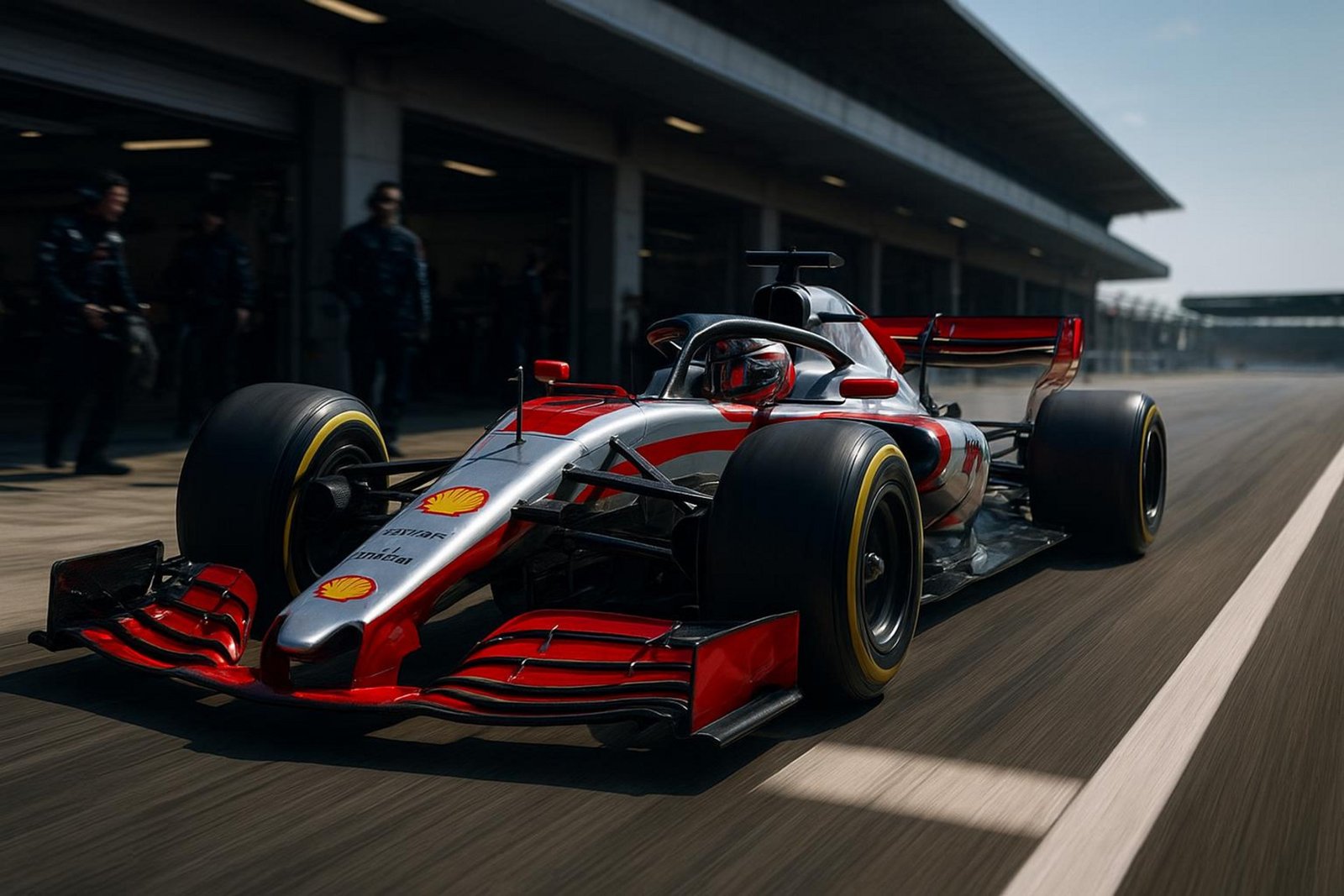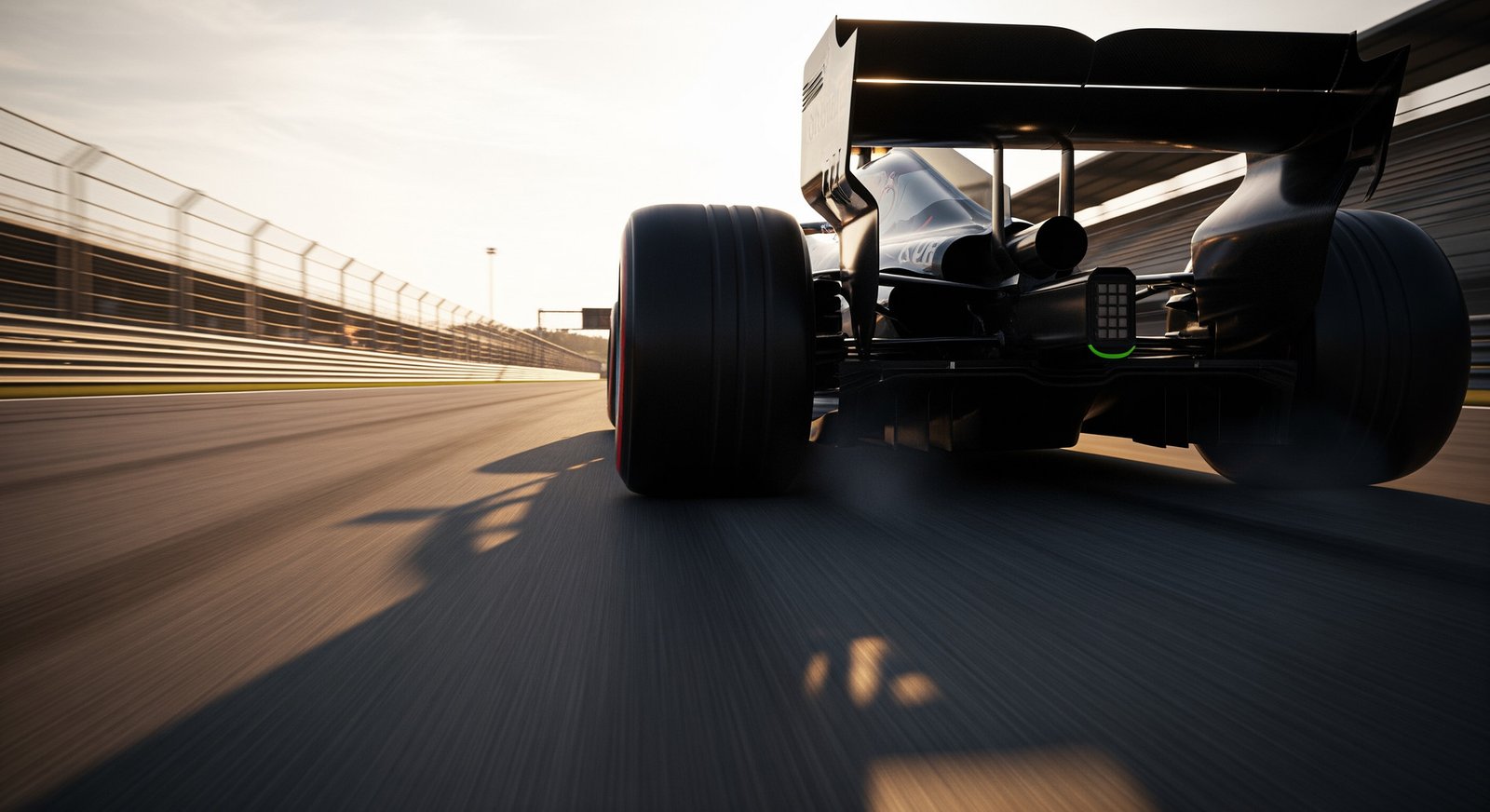What Does an Out Lap Mean in F1?

In Formula 1, where every second and every move can win or lose a race, knowing the different lap types matters. One of the most important, but often overlooked, is the out lap.
An out lap is the first lap a driver does after leaving the pit lane. It is not about setting a fast time or passing others. Instead, it prepares the car and its parts for the hard push that follows, especially in qualifying.
This simple-looking lap plays a big part in a driver’s performance during qualifying and after pit stops in a race. It acts as the link between the controlled space of the pit lane and the high speeds on track. It lets the team and driver make sure the car is in the best condition before pushing hard.
A poor out lap can hurt the laps that follow, which shows how important it is across an F1 weekend.
When Does an Out Lap Occur During an F1 Weekend?
Out laps happen many times during a Grand Prix weekend. They matter most in qualifying.
When drivers leave the garage to set a lap time, their first trip around the circuit is an out lap. This lap sets up the car for the fast “hot lap” that follows and can help secure pole position.
You also see out laps in free practice on Friday and Saturday. These sessions help teams adjust car setup, test tyre compounds, and let drivers learn track grip and wind changes.
Each time a car exits the pit lane in practice, it starts with an out lap. During the race, every pit stop for fresh tyres or repairs is followed by an out lap.
The exact aims vary, but the core goal remains the same: get the car ready to go fast safely.
Why Is the Out Lap Important?
The out lap is very important, even if it rarely makes the highlights. It is a basic step for best performance, especially before a key hot lap in qualifying. The main reason is to bring the tyres and brakes up to the right temperature.
When a car leaves the pits, tyres and brakes are cooler. Cold tyres have less grip and make the car feel unstable. Cold brakes don’t stop the car as well.
The out lap gives drivers time to carefully warm these parts. By the time they cross the line to start a flying lap, the car should be in its best range for grip, braking, and speed.
If the out lap is handled badly, the hot lap will be slower, which can hurt grid position or race plans.
How Is an Out Lap Different from Other F1 Laps?
Not every lap in F1 serves the same purpose. Each type has a different goal and level of effort. Knowing how an out lap differs from other laps helps you see why it matters.
The out lap is a setup lap. Other laps aim for speed, saving parts, or lining up the field before the start.
Lap Type | Main Purpose | Typical Pace | When It Happens |
Out Lap | Warm tyres/brakes, check systems, find space | Moderate, with bursts to build heat | Before a hot lap; after pit stops |
Hot (Push) Lap | Set the fastest time possible | Flat out | During qualifying; key race moments |
In Lap | Return to pits after a run | Slow in quali/practice; faster in races before pitting | After a hot lap; before a pit stop |
Formation Lap | Warm up and final checks before race start | Controlled | Just before the race start |
Out Lap vs. Hot Lap (Push Lap)
The difference here is the biggest. The out lap is calm and controlled. The driver warms the tyres and brakes to the right temperature. There is no need to set a time. Pushing too hard here can wear tyres or overheat them before the important lap.
Right after a good out lap comes the hot lap. Now the driver uses the car’s full potential and aims for the fastest time. Every corner and straight matters.
The hot lap depends on the prep done on the out lap. In qualifying, drivers may do several hot laps, each starting with an out lap.
Out Lap vs. In Lap
If the out lap is the entrance, the in lap is the exit before the pits. What an in lap looks like depends on session type.
In qualifying and practice, the in lap is usually slow and controlled. After a hot lap, the aim is to cool tyres and brakes to avoid extra wear. Drivers often back off to let airflow remove heat, then head into the pit lane.
In a race, the in lap can be very different. Before pitting for new tyres, drivers often push harder to make time on rivals who stay out. Since the tyres will be changed, wearing them in that short period matters less, so they can push more to gain time.
Out Lap vs. Formation Lap
The formation lap happens just before the race starts. All cars leave the grid, warm up tyres and brakes, and then line up again for the start. While drivers also warm parts here, the goal is different from an out lap.
On the formation lap, drivers heat tyres, brakes, and engines and do a last check that everything works well. You’ll often see weaving to warm tyres across the full surface. The pace is controlled.
An out lap is usually a solo effort (though traffic matters) that comes right before a fast lap or right after a pit stop.
What Are the Main Purposes of an Out Lap in F1?
The out lap has many key jobs in F1. It is more than a trip from the garage to the line. It is a planned set of steps to get the car ready to deliver its best on a fast lap or after a stop.
From carefully heating parts to picking the right spot on track, every move on the out lap aims to boost performance and cut risks. This matters most in qualifying, but it also helps during practice and race pit stops.
1. Preparing Tyres for Best Performance
The most important job is to bring tyres into the right temperature window. F1 tyres work best within a narrow range. Leaving the pits, they are cold and have less grip.
Drivers often weave from side to side on the out lap to build heat across the tyre. With this careful work, the tyres are sticky and responsive by the time the hot lap starts, giving grip in corners and under braking and acceleration. Without this care, cold tyres can cause understeer or oversteer, hurt lap times, and even lead to mistakes.
Teams also watch tyre pressures closely, since heat changes pressure. Getting both temperature and pressure right is a fine art. Too much heat can cause blistering and quick wear. Too little heat gives low grip. The out lap is where drivers and engineers aim to land this balance.

2. Warming Up Brakes and Car Components
Beyond tyres, the out lap helps warm the braking system and other key parts. F1 brakes work at very high temperatures. When cold, they stop less well and feel inconsistent.
On the out lap, drivers press the brakes gently at first to build heat. By the time they reach the heavy braking zones on a hot lap, the brakes should be ready, giving strong and repeatable stopping power.
Also, the engine, gearbox, and other systems need to reach the right temperatures and pressures. These parts do not need as much warming as tyres, but a short period of gentle running helps them settle before the stress of a fast lap or race stint.
3. Setting Up for a Qualifying Hot Lap
In qualifying, the out lap leads straight into the hot lap, so it must be done well. Drivers use it to warm parts, get into the right mindset, and find space on track. As they approach the last corner, they often speed up to cross the start/finish line as fast as possible, carrying speed onto the main straight and into the first corners.
The out lap also gives a live read on track grip, wind, and any changes since the last run. Drivers then adjust their style for the hot lap. It’s a fine balance between prep and quick adaptation so they can get the most from the car when it matters most.
How Drivers Manage Traffic on Out Laps
Traffic management on an out lap, especially in busy qualifying segments like Q1, is a big challenge. With up to 20 cars on track, drivers try to find clear air so they do not get stuck behind a slower car. Getting blocked can ruin tyre warm-up or force a slowdown right before the hot lap.
To make space, drivers may slow down on straights or in easy corners. They must do this without holding up others, or they could face penalties. Teams and drivers stay in constant radio contact.
Engineers guide drivers on gaps and where to place the car. The aim is to reach the line with a clear track ahead and tyres and brakes in the right window for a flat-out lap.
How Do Teams and Drivers Optimize Out Laps?
Getting the most from an out lap takes planning, driver skill, and quick choices on the fly. Teams and drivers work together so each out lap helps the next push lap or race stint.
This work is less about raw speed and more about precision, temperature control, and reading tyre behavior and track grip. A well-done out lap can quietly set up a great hot lap or help an undercut work.
Strategies for Tyre Temperature and Pressure
Tyre control sits at the center of a good out lap. Before the car leaves the garage, tyre blankets heat the tyres to a set temperature.
That is only the first step. On track, drivers must accelerate, brake, and weave to add heat and spread it evenly.
The exact approach depends on the compound (harder tyres need more work) and the conditions (cold days need extra effort). Engineers watch tyre temperatures and pressures through telemetry and give real-time guidance.
The goal is to reach the target temperature and pressure right as the car starts the hot lap so grip and response are at their best.
Balancing Pace and Preservation before a Fast Lap
On an out lap, drivers must heat tyres and brakes without overworking them or wasting fuel. Push too hard and you might wear the tyres and hurt the hot lap. Go too slow and the tyres may not reach the right temperature, which means less grip. It’s a tight balance between pushing and holding back.
Also, in qualifying the fuel load is low to save weight. Drivers must manage pace to save the small amount of fuel on board, while still respecting minimum lap time rules to avoid penalties for going too slowly.
The driver’s feel for grip and the team’s clear radio calls are very important for getting this balance right.
Common Mistakes Made During Out Laps
Even with careful planning, errors happen.
A frequent mistake is misreading traffic and ending up behind a slower car. That can break the tyre warm-up rhythm and leave tyres too cold for the hot lap, ruining the run.
Here are some of the most common mistakes:
Too little tyre/brake heat: low grip, longer stopping, slow hot lap.
Too much heat: overheating, blistering, quick tyre wear.
Poor fuel planning: not enough fuel for the push lap or return to the pits.
Any of these can cost grid spots or derail a race plan, which shows how precise drivers and teams must be even on laps that are not timed for position.
Frequently Asked Questions About Out Laps in F1
The idea of an out lap sounds simple, but fans often have questions about it. Its quiet but strong effect on performance makes it worth a closer look. Here are answers to common questions about this setup lap.
Is the Out Lap Timed During Qualifying?
No. The out lap is not the lap that sets a driver’s qualifying time. When a driver leaves the pit lane, the session time keeps running, but the lap that matters for grid spot is the flying lap that starts when the car crosses the start/finish line. The best flying lap time is what counts for their qualifying position.
Do Out Laps Matter During F1 Races?
Yes, out laps matter a lot in races. An out lap happens each time a driver leaves the pits after a stop. The main job is to bring new, cold tyres up to temperature fast and safely to keep or gain track position.
In races, out laps often need more push. Every second counts because rivals on warmer tyres are going fast. Drivers must push on tyres that have less grip at first, which is risky but can pay off. A strong out lap can make an undercut work. A slow one can lose places and spoil a plan.
Can an Out Lap Affect a Driver’s Final Lap Time?
Yes. In qualifying, the out lap has a direct effect on the hot lap time. The out lap sets the conditions for speed. If tyres and brakes are not warmed well enough, they will not work at their best on the push lap.
Cold tyres give less grip, so corner speeds drop and the car can feel nervous. Cold brakes mean longer stopping distances and less confidence. Any shortfall here makes the hot lap slower.
A well-executed out lap puts tyres and brakes in the right range so the driver can get the maximum from the car and go as fast as possible on the flying lap.








